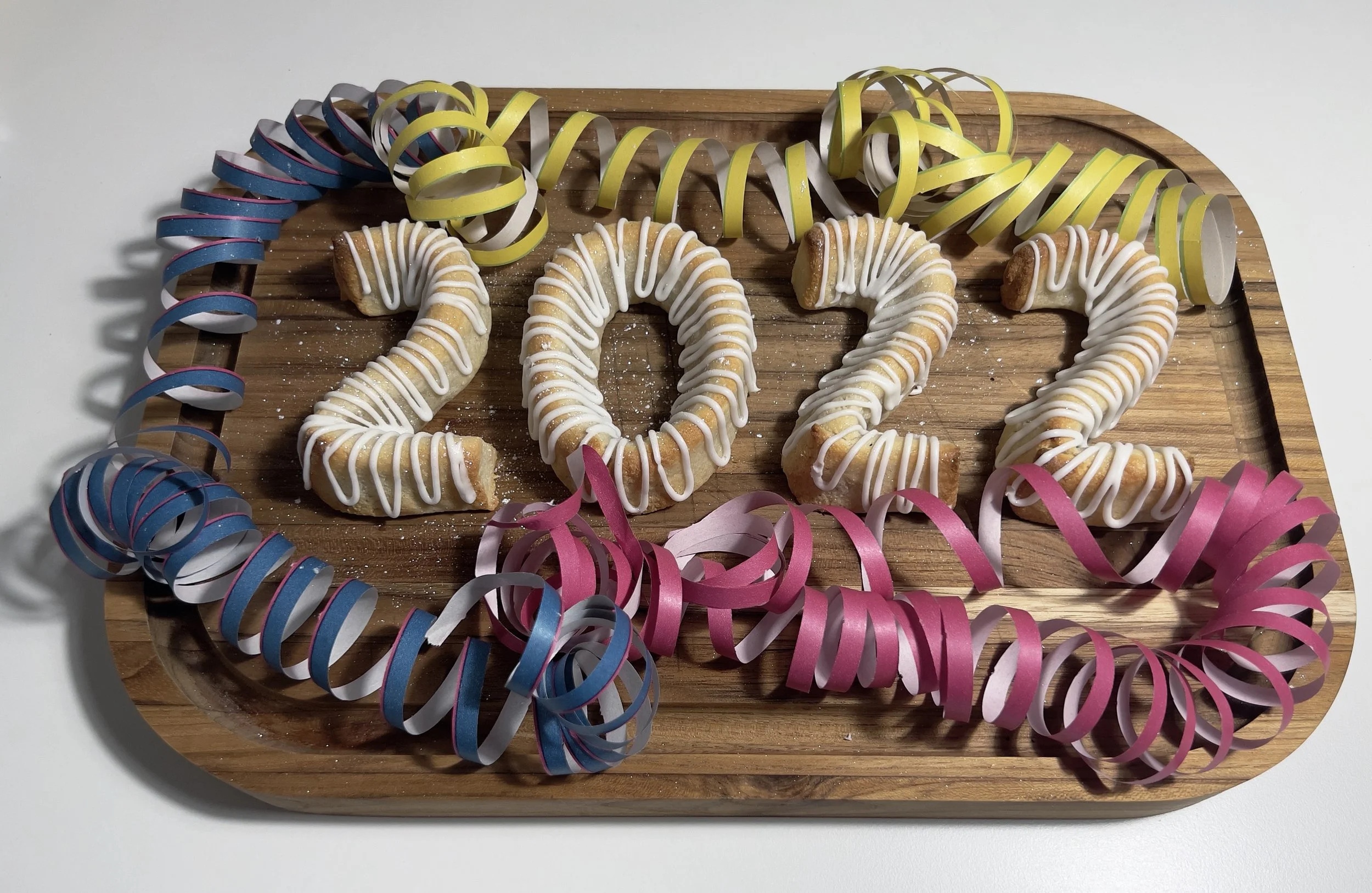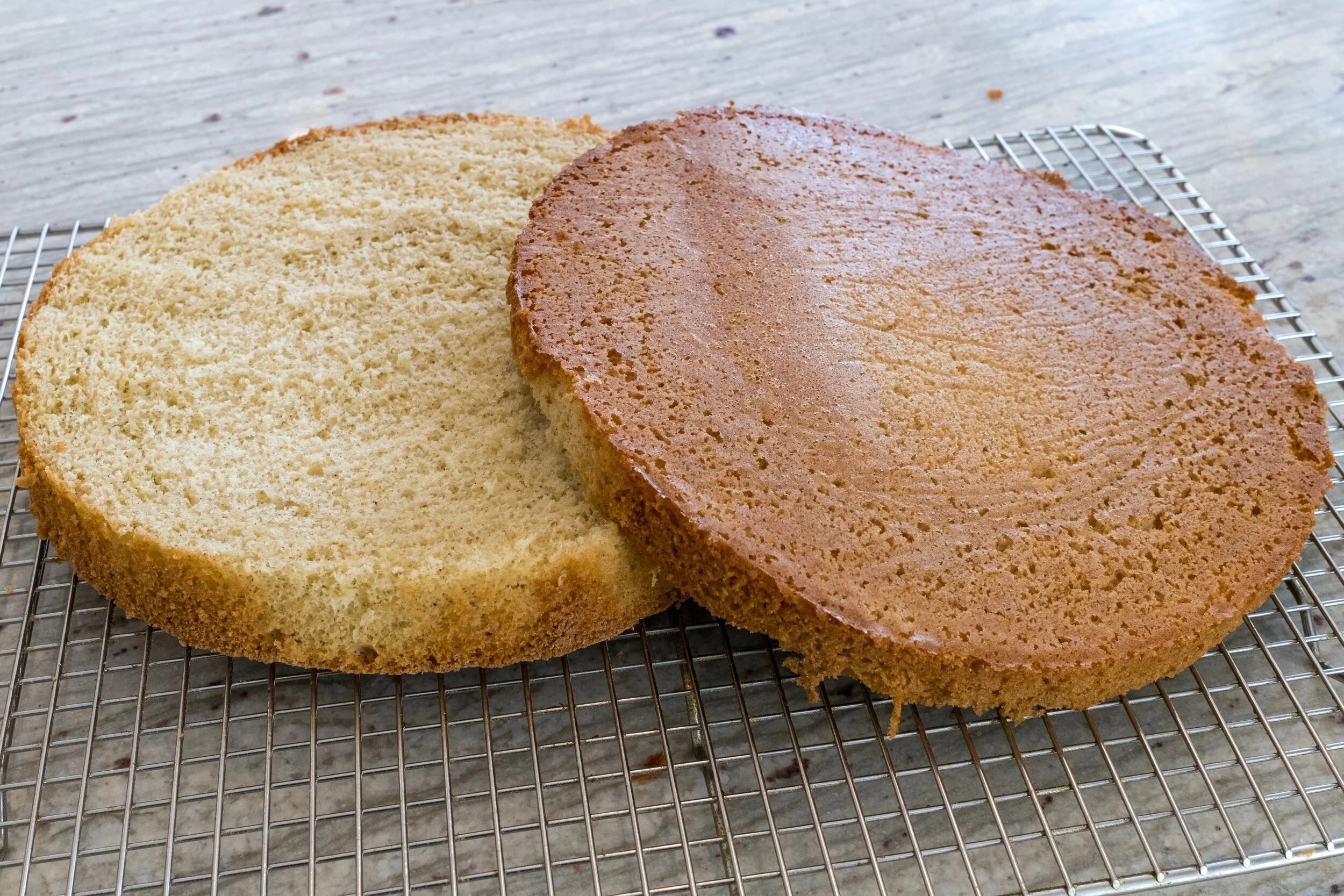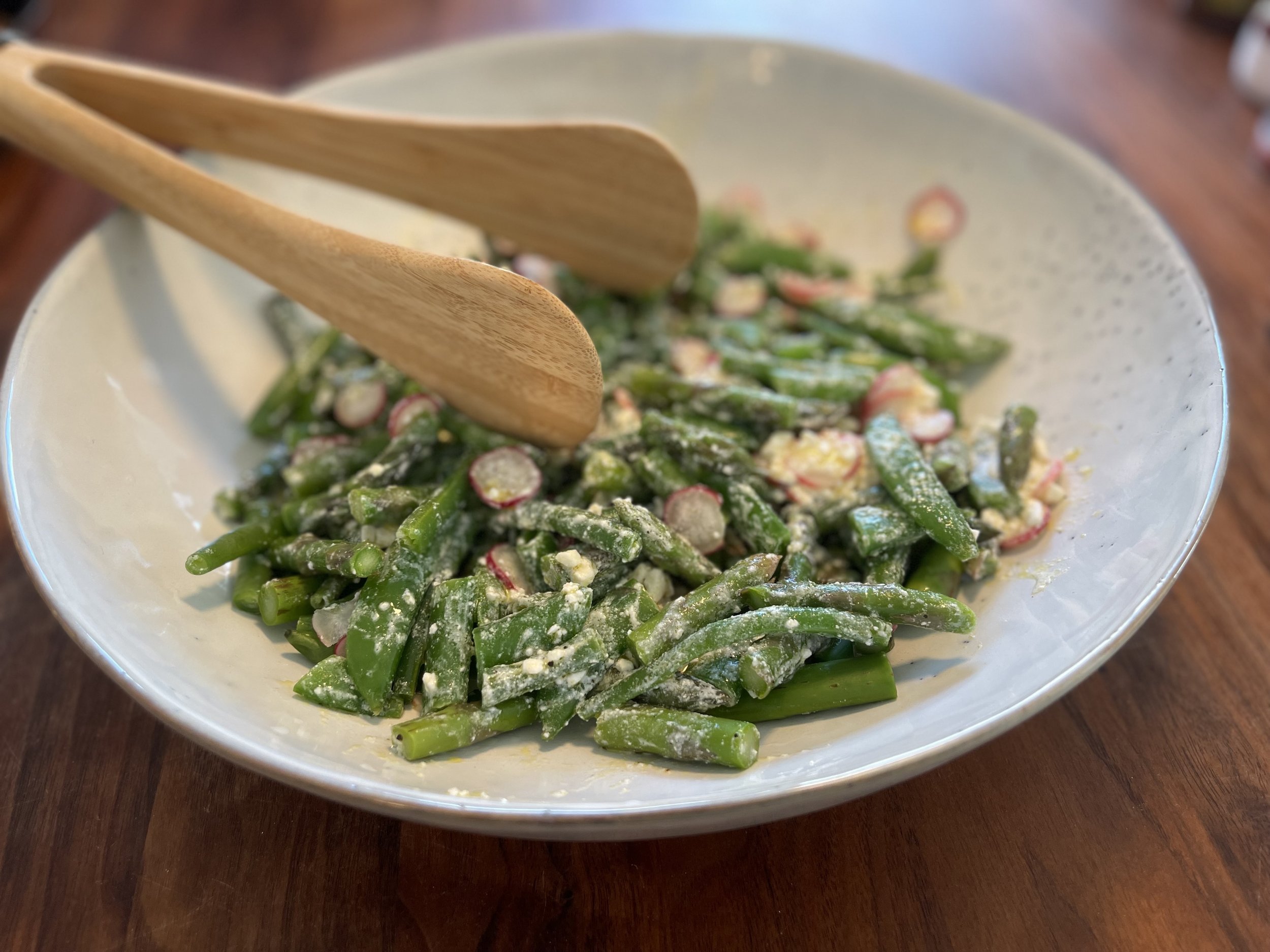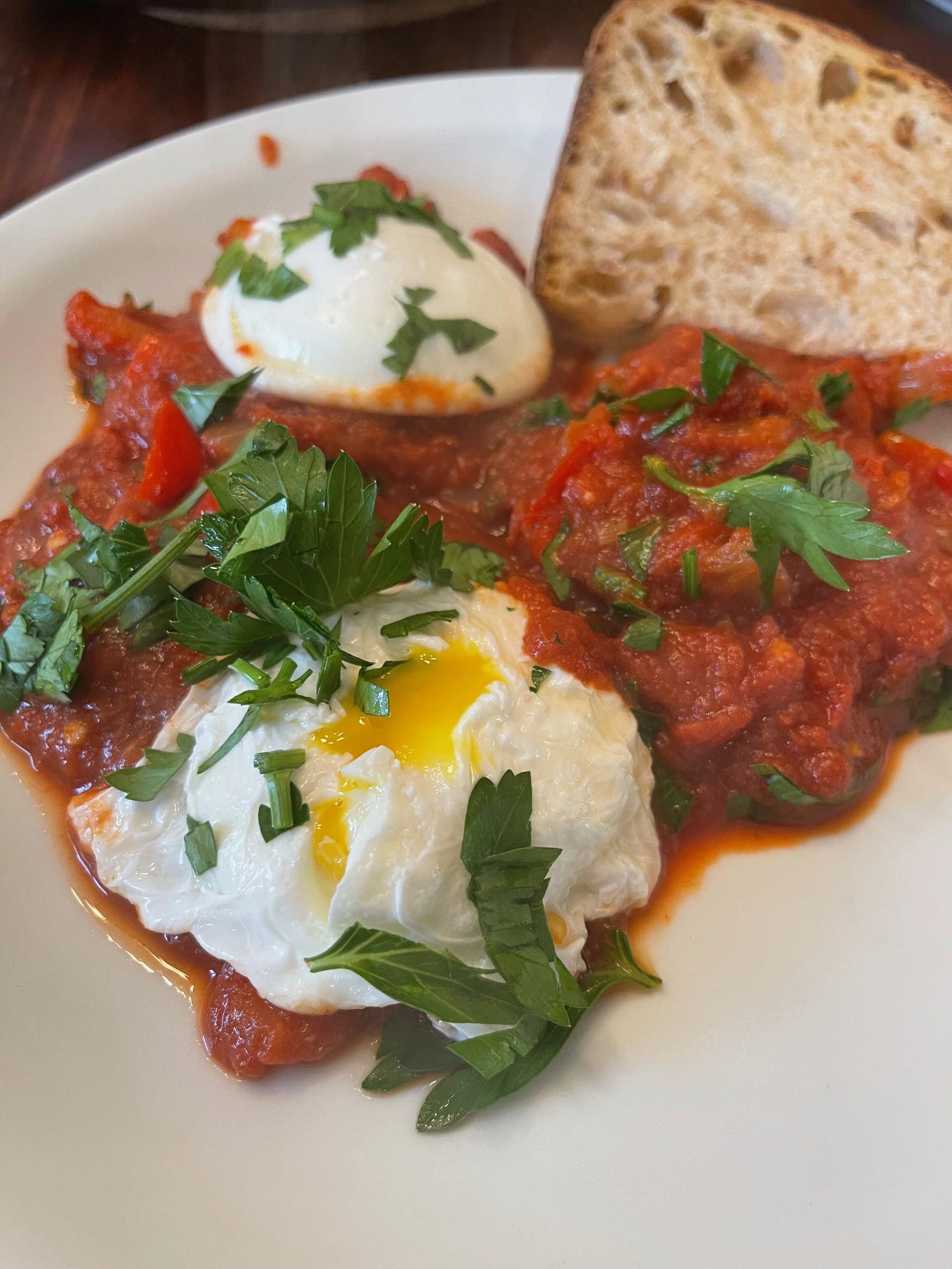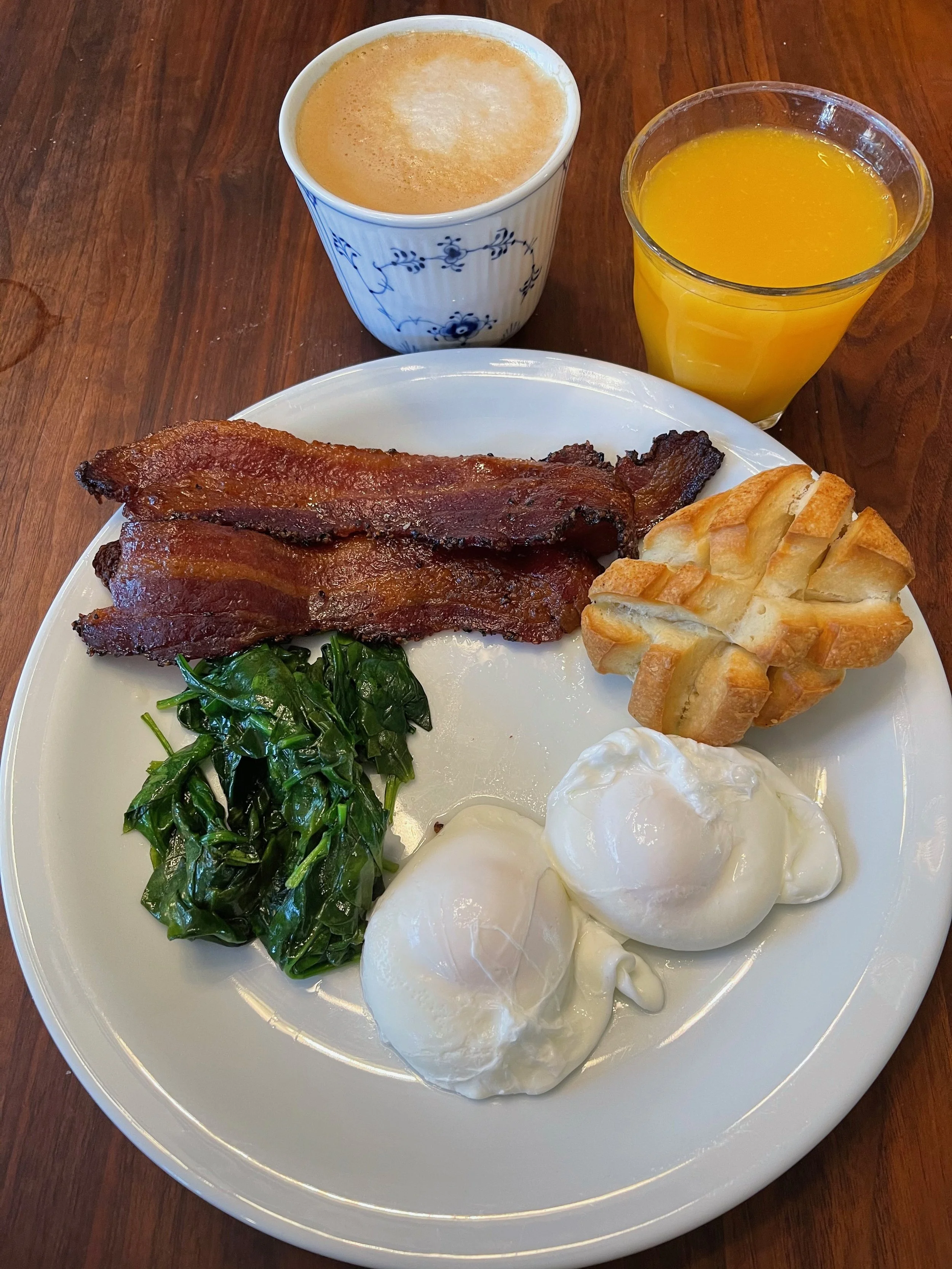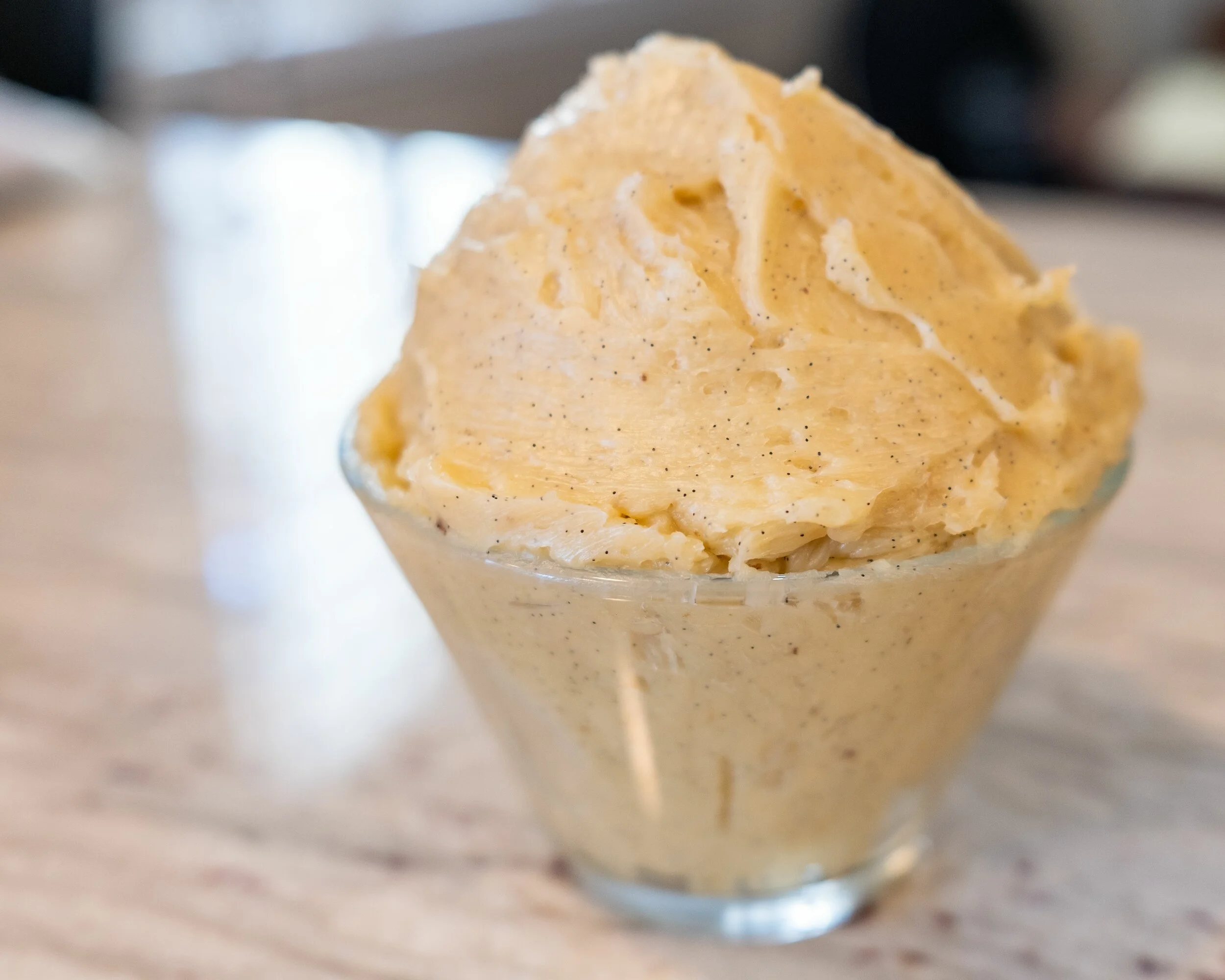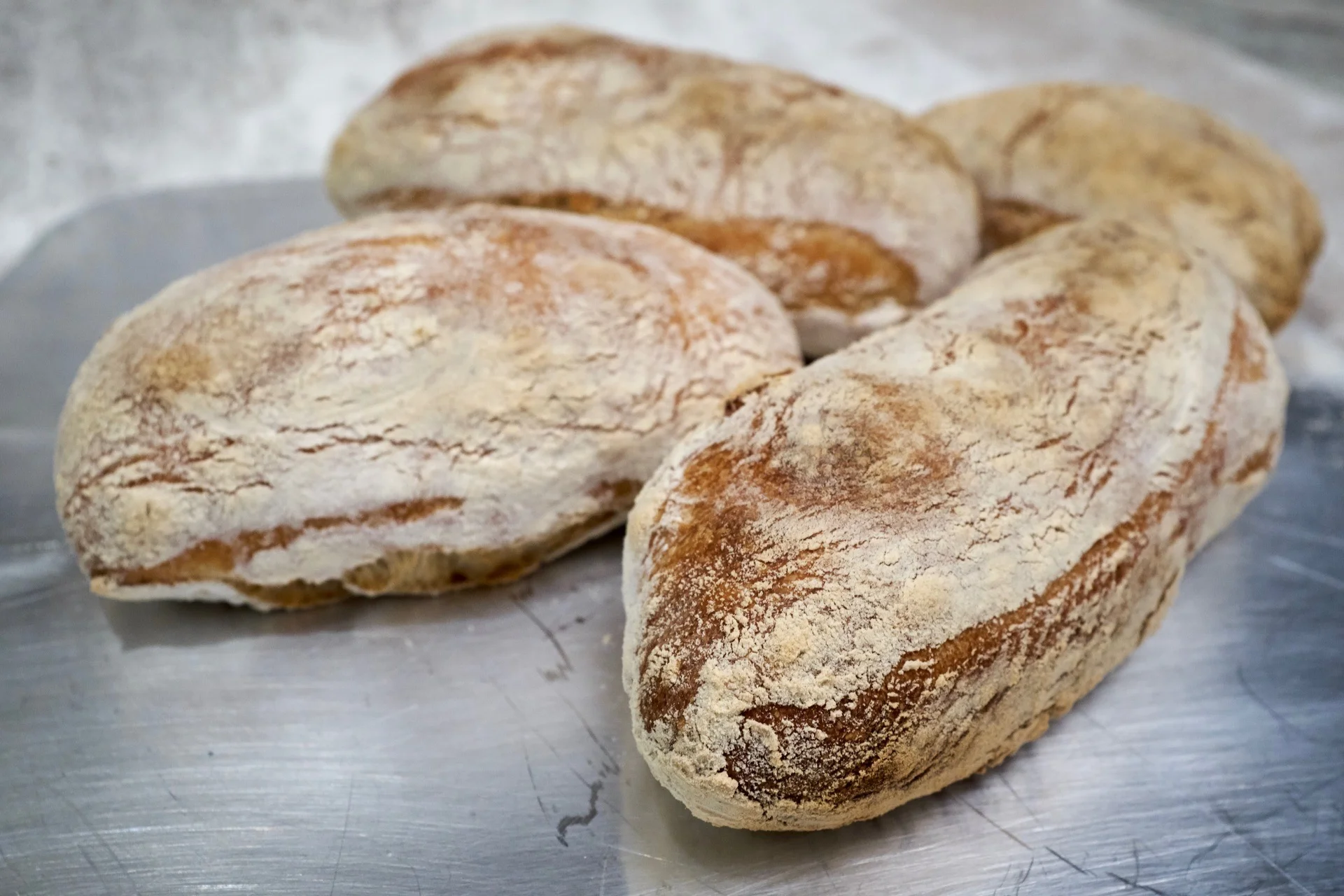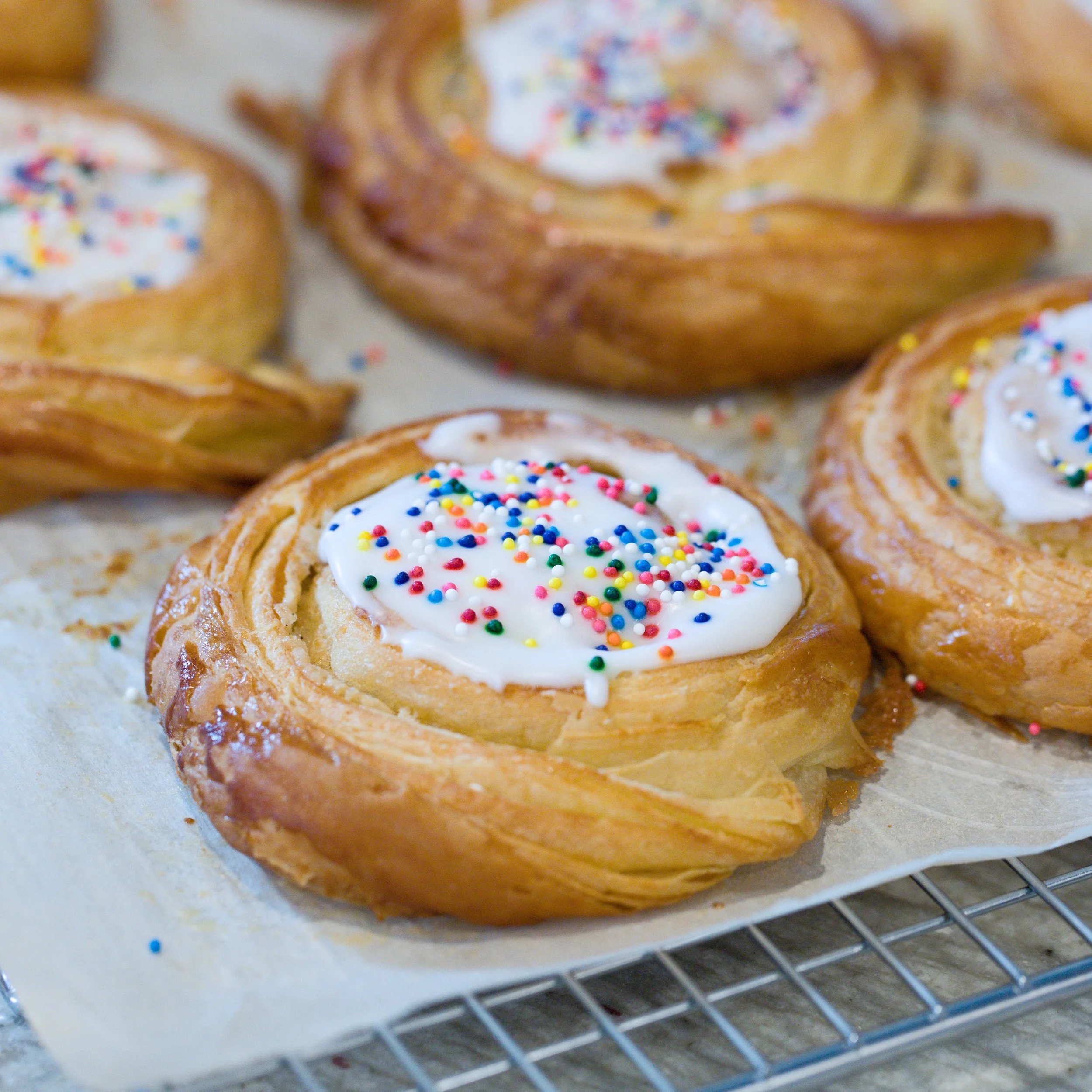I don't think this is a secret: I love to bake bread, and I love sourdough breads, as long as they are not overly tangy. A really sour sourdough bread is not worth the calories, in my opinion. But this bread I could eat every day.
I previously made Basic Country Bread a la Tartine, and it is hands down the best bread I have ever had. The only thing, I would love to be able to make the it with less wait time. This overnight bread is less work, and it is almost as good as the Tartine bread.
The rye flour and the dark bake of the bread, added great flavor to the bread. The crust was nice and crispy while the crumb had a great chewiness. Overall it is a great bread, close to perfection.
Makes 2 loafs.
Ingredients:
Levain:
- 200 g water, 85-90℉/29-32℃
- 50 g mature, active levain (The one you keep in the refrigerator, and recently fed.)
- 200 g all-purpose flour
- 50 g whole wheat flour
Dough:
- 705 g all-purpose flour
- 125 g whole wheat
- 50 g dark rye flour
- 685 g water, 90-95℉/32/35℃
- 22 g sea salt
- 220 g levain
Equipment:
Directions:
You need to have a newly fed levain, mine was fed 2 days before starting this bread.
Day 1, morning:
Mix all the ingredients for the levain in a medium bowl. Mix it well so you don't have any lumps of dry flour. Cover the bowl with plastic wrap or a plate and let it rest on the counter for 7-9 hours. You can test the leaven's readiness, by dropping a spoonful into a cup of room-temperature water. If it sinks, it is not ready and needs more time to ferment and ripen. If it floats, it is ready to use.
Day 1, afternoon (5-6 p.m.):
In a large bowl (I used the one for my stand mixer), combine the flours and the water, making sure not to have any dry flour. Let the mixture rest for about 25 minutes. This process is called autolyse, and basically helps activate the enzymes in the flour, and helps improve development of the gluten structure in the dough.
Sprinkle the salt on top of the flour mixture. Add the 220 g levain and knead it for 3 minutes in the stand mixer. The dough will be on the wetter side, but will be elastic.
Transfer the dough to a a plastic bucket, with a lid for the bulk fermentation. Let the dough rest for about 30 minutes, at room temperature.
Folds:
You need to do about 2-3 folds during the bulk fermentation. To do a fold, dip your hand in water to prevent the dough from sticking. Grab the underside of the dough, stretch it out, and fold it back over itself. Rotate container one-quarter turn, and repeat. Do this 2 or 3 times for each fold.
After the first fold, place the dough in the refrigerator. Do another 2 folds before heading to bed.
Day 2, early morning:
Take the dough out of the refrigerator, and let it rest in the plastic bucket for about an hour. Gently ease the dough out of the bucket, onto a lightly floured surface. Cut the dough into two even parts.
Working with the dough you want to incorporate as little flour as possible. Work each piece into a round using scraper and 1 hand. Build the tension by with the dough slightly anchoring to the surface as you rotate it. By the end, the dough should have a tight, smooth surface. Dust tops of rounds with flour, cover with a tea towel, and let rest on the work surface for 20 to 30 minutes. During this stage, (bench rest), each round will relax and spread into a thick pancake shape. The edges should appear fat and rounded, not flat or "dripping" of the edge. If the dough is flat or the dough is spreading too much, the dough has not developed enough strength during the bulk fermentation. And you need to re-shape the dough into a round for a second time and let it sit to rest covered once more.
Shaping the bread:
Be careful not to deflate the dough during this process. This final shaping builds up tension inside each loaf, so it holds it's form and rises substantially when baked. This is called "oven spring."
Fold the third of the dough closest to you up and over the middle third of the round. Stretch out the dough horizontally to your right and fold this right third over the center. Stretch the dough to your left and fold this third over the previous fold. Finally grab the dough farthest from you and fold this flap toward you and wrap it up and over, while rolling the whole dough package away from you, that the smooth underside of the loaf now is on the top and all the seams are on the bottom. Let the shaped loaf rest on the counter for a minute. Fold the other loaf the same way.
Line 2 baskets with clean tea towels; generously dust with flour. Using the dough scraper, transfer each round to a basket, smooth side down, with seam centered and facing up. Let rest at room temperature (75℉ to 80℉), covered with towels for 3 to 4 hours before baking, this will be the proofing of the bread.
Baking the bread:
About 45 minutes before you are ready to bake the bread, preheat oven with the dutch/french oven to 500℉ (260℃), with rack in lowest position.
Flip one bread into heated dutch/french oven. Score top twice using a razor blade matfer lame. Cover with lid. Return to oven, and reduce oven temperature to 450℉ (230℃). Bake for 20 minutes.
Carefully remove lid and continue to bake until crust is deep golden brown, 20 to 25 minutes more.
Transfer loaf to a wire rack. It will feel light and sound hollow when tapped. Let cool.
To bake the second loaf, raise oven temperature to 500℉ (260℃), wipe out dutch/french oven with a dry kitchen towel, and reheat with lid for 10 minutes before baking.
Enjoy!

